A check can be one of the most vital tools you have when managing finances. There are many different types, and they all have a specific purpose. Knowing their purpose and how to correctly write one will save you from many problems later on.
The Purpose of a Check
A check directs a bank to pay a specific sum. It can either be converted to cash or deposited into an account. As the name implies, they connect to checking accounts.
Their purpose is to allow two parties to arrange a monetary transaction without needing physical currency. The check becomes the substitute and will account for the amount written on it. You can use it in numerous ways, including:
- Paying bills
- Transferring money
- Sending cash gifts
It’s a more secure form of moving money around. This is because no one can cash in the check unless they’re the payee, the one meant to receive it. So, even a stolen or lost check won’t have any value. Back in the day, checks were the primary form of transacting without money. However, in modern times, more options have sprung forth.
When you are transacting using a check, you have to make sure that you have money in your account. If not, it will bounce, and the transaction will not continue. You will have to pay the bank a fee for overdrawing because you didn’t account for your budget.
There are several types of checks, and they have different purposes. These are:
- Cashier’s check: A check that has a guarantee from the bank. It is often common in large transactions.
- Payroll check: The check that an employer uses to compensate their workers. However, in recent years, direct electronic transfers have become the preferred form of payroll.
- Certified check: This check has a guarantee that it will not bounce. The catch is you have to withdraw that check from the same bank it’s issued from. The bank will then verify its authenticity.
Correctly Writing a Check
Want to learn how to write a check? Writing a check can be overwhelming if you don’t know how to do it. It’s all about understanding each part of the check and knowing what you need to write on it. There doesn’t have to be a specific pattern for you to follow. As long as you complete the information required, you’ll be fine. Here are the parts of the check you need to fill out:
Date
Usually, you’ll write the current date on the upper right part of the check. You can also postdate it by placing a later date. However, you have to coordinate with your bank to ensure that the payee doesn’t get money from your account earlier than intended.
Payee
The payee is the individual or organization you’re paying. You’ll have to make sure that the information you write is accurate so that they can get the money.
Amount
There are two amounts you’ll write on the check. The first is in numeric form, where you’ll place the value within a small box. For example, you can write $10.15. Make sure to write within the box to prevent fraud.
Then the second amount is writing the numerical value in words. It is a way to verify and avoid confusion. If the writing is different from the numbers, the check will become invalid.
Signature
Often found at the bottom right corner, you’ll place your signature here along with your name. The check will not be valid if you do not use the same name and signature filed at your bank.
Memo
The memo is an optional part of the check. You don’t need to write anything on it, but others use this line for reminders. Here are some examples:
- Information that the payee will need to process the check.
- Utility account number for bills payment
- Social security number for IRS payments.
Don’t Forget to Record
In your checkbook, you’ll have a section where you can record the check number and information about the transaction. Doing this will help you remember everything you issue. Also, avoid writing a blank check because it’s putting your account at risk.
If you want to learn more about the best banking practices, you can buy our banking courses at Wealtheo™. We provide up-to-date and comprehensive information to help you maximize your finances.
Related Articles
How To Quickly Improve Your Credit Score
Bad credit can lead to plenty of issues. It can make it difficult to get a loan, rent an apartment, or even get a job. ...
Read More
Is Debt a Sign of Failure?
Debt is a tricky topic. Some people see debt as a sign of failure, while others see it as an opportunity to invest in something ...
Read More
How To Set and Reach Financial Goals
When it comes to your finances, you would likely love to be in a much better place. But, if you’re honest with yourself, you often ...
Read More







